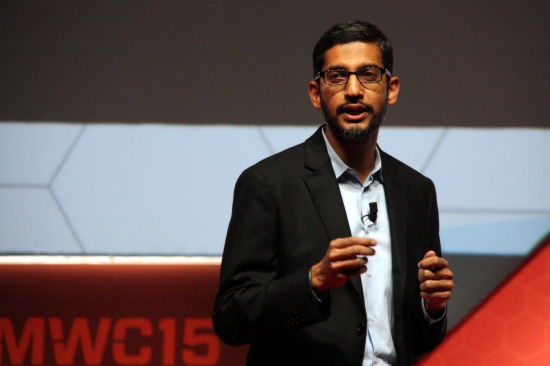MWC: Samsung and Microsoft present new phones, Google enters carrier market and Zuckerberg outlines Internet.org
The new flagship phone from Samsung will come in two models, the Galaxy S6 and the Galaxy S6 Edge, according to the announcement that the South Korean company made in Barcelona at the beginning of the Mobile World Congress, the largest annual event of the cell-phone-related industries. Microsoft debuted two new mid-range Lumia phones, the 640 and the 640 XL models, which include the new Windows 10. Google announced its intention to enter the carrier market, with a new approach that uses the existent carrier networks and innovative Wi-Fi projects. In addition, Facebook founder Mark Zuckerberg explained his project to bring the internet to developing countries and connect them through his social network.

L’Hospitalet de Llobregat (CNA).- The new flagship phone from Samsung will come in two models, the Galaxy S6 and the Galaxy S6 Edge, according to the announcement that the South Korean company made in Barcelona at the beginning of the Mobile World Congress, the world’s largest annual event of the cell-phone-related industries. Microsoft debuted two new mid-range Lumia phones, the 640 and 640 XL models, which feature the new Windows 10, a system that will combine mobile and desktop applications. Google announced its intention to enter the carrier market, with a hybrid approach that integrates innovative technology and the existent phone carrier networks. In addition, Facebook founder Mark Zuckerberg explained his project to bring the internet to developing countries and connect them through his social network.
Presentations of new phones
Both Galaxy models feature an improved design that swaps the previous plastic cover for glass, making it similar to the iPhone 6. This is a big improvement and makes the phone feel lighter and thinner than the previous model. The Samsung interface that runs on top of Android has also been improved, with a focus on the camera app despite it having the same 16 megapixel resolution as the previous model. The Galaxy S6 Edge features a definitive twist: a curved screen that makes the iOS device feel normal. The company claims to have the best screen on the smartphone market, something hard to prove, but it is certainly sharper than the previous Galaxy. Samsung hasn’t release the prices yet, but if the previous model approached the 500€ tag, this new model is expected to have a similar cost. It will also feature a wallet feature similar to the Apple Pay program.
Microsoft debuted two new Lumia phones, the Lumia 640 and the Lumia 640 XL, that feature a bigger screen. Without a clear flagship model, the Redmond-based giant is focusing its strategy on the mid-range market, currently populated by Android devices. The new Lumia will cost about €139 and features a 9-megapixel camera. The XL will be released this March and the 640 in April. It was also the first public showcase of Windows 10, the new operating system from Microsoft, which carries a strengthened integration between phone and desktop and an improved Cortana, the Siri-like voice recognition software.
Google and Facebook start a race to provide internet in developing countries
Sundar Pichai, Google Senior Vice President, announced during the main keynotes speech that the Mountain View-based search engine will enter the carrier market. But, it will not be a standard operator. They plan to build a network on the top of the existing companies, beginning in the US. According to Pichai "anything that we do in connectivity has the same open approach as Android. All innovations happen in the intersection between software and hardware." Another announcement was that made concerning the beginning of the commercial tests for Project Loon with a series of partners, an innovative approach for providing an internet connection through air balloons where the traditional cell towers cannot reach. Previously, they lasted six days in service, but now they can float for up to six months. Asked about the rise of Chinese manufacturers that provide highly customised Android systems, he said that "this is the basis of Android, an open platform where everyone can build a service on top of it". Project Titan was also mentioned. This is a project powered by solar drones that will also provide connectivity in rural areas.
Mark Zuckerberg has a similar plan for providing internet in rural areas in developing countries. The Facebook founder came to the Mobile Congress for the second consecutive year, and gave details of the project Internet.org. This initiative will give free internet access through an app.
Partnership between car manufacturer Seat and Samsung
Another announcement was a partnership between Seat and Samsung that will provide cutting-edge technology for the car manufacturer based in Greater Barcelona. The Samsung stand at the Mobile World Congress features a Seat model with integrative features that will reach the market in the next months. For example, the MirrorLink software reproduces content from a smartphone screen in the car in a secure manner, without obstructing the driver’s view.